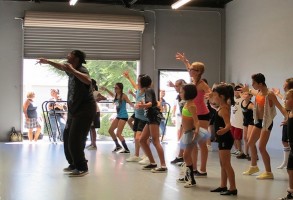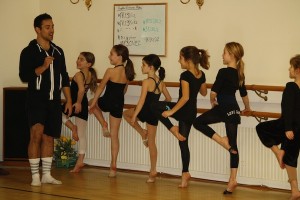Inviting master teachers, guest instructors, or visiting artists to teach at your school can be an enriching and motivating experience for dancers of all ages. Make the most of this experience by fully engaging in your role as host.
As you prepare, participate, and reflect on your visitor’s class, workshop, or residency, use this checklist as a guide.
Before

Determine your goals
Before setting a budget, selecting a guest teacher, or scheduling, determine your goals and purpose for inviting a guest instructor or master teacher. Ask yourself the following, perhaps creating prioritized lists:
- What do I want my students to learn about dancing/technique?
- How do I want my students to feel after this experience?
- What do I want my students to understand about themselves or their personal dance goals?
- What do I want my students to do as a result of this experience?
- What qualities am I looking for in a guest teacher?
- What resources or contacts are available to me to find the right instructor?
- How will I narrow my choices for instructors?
- What do I need to know or ask to make my final selection?
- Which age groups or levels do I think will benefit the most? Why?
- Which dance style or styles do I want my students to explore and experience with a guest?
- How will I make it easy for students to participate? Incentive? Cost? Sign-up?
- What will be the obstacles/objections for students and parents? How will I respond and remove these objections one by one?
- How and where will I promote the class/residency?
Communicate with your guest
Once you’ve made your selection work together and talk over the upcoming visit so that you both are prepared. Be sure to include the following in your discussions:
- Your goals for your students in regard to the visit and how you might work together to achieve those goals
- What the teacher hopes or plans to achieve during the visit and again, how you’ll work together on these
- The depth of experience or training that students have in this or related dance forms/styles
- Any expectations you have or standards required (from attire, to language, to mandated regulations or procedures depending on your circumstances). Providing a list makes you appear organized, puts it in writing, and ensures that the teacher has an opportunity to object or ask questions.
- Possible concerns in the class (behavioral issues, students with special needs, etc.)
- Who will be there to assist, help manage the class(es), observe, and/or co-teach during a long-term residency.
- How you’ll be promoting (including the invitation of students outside your client base) and any information you’ll need from him/her for these purposes
- Stats – size of the studio space, number of students, how much time he/she will have
Give students and parents the 411
Before your guest arrives, prepare your students and parents by going over the following:
- What students will be learning
- Important terminology
- Relevant history or knowledge of the visiting artist
- Appropriate etiquette and expectations for behavior
- Lots of communication about the event, time, cost, etc.
During
Watch your students, take notes, and reflect on the following questions:
- How do they respond to new material? Do they embody the given movement?
- How do they respond to the teacher? (Are they the blasé students you know and love 😉 or do they perk up?)
- How do they respond to new concepts?
- What are the things they respond favorably or positively to?
- What are the things they respond negatively to?
- Do they seem stuck in old patterns?
- Do they pick up the movement quickly?
- What do we need to work on?

More to keep in mind:
Be prepared to quickly discipline or handle behavior issues should problems arise.
If you are taking the class along side your students rather than simply observing, you might consider videotaping the session (you have an ethical obligation to check with the instructor first and let them know if you plan to use video footage or photographs for promotional purposes).
After
- Survey students and parents (formally or informally) to gather thoughts and reactions.
- Send a thank you to the guest teacher. You might include some of the reactions or results from your survey or have students write their own notes or cards of appreciation. The teacher will appreciate and can use positive testimonials. Constructive criticism may also be appreciated – use your best judgment and tact.
- Continue to dialogue and ask questions if you have them. Your guest will usually be happy to discuss their methods and reasons behind them if you present your thoughts/questions clearly and are considerate of their time.
- Based on your observations, fold new ideas and concepts into your own teaching. Take special note of the kinds of things that really seemed to ‘click’ or work for your students during the session. How can you incorporate or address this in your regular classes.
What would you add to the checklist?
Tell us about your experiences with guest teachers!
Did you see a positive change in your students?
What have you learned from past events or mistakes?
Nichelle Suzanne is a writer specializing in dance and online content. She is also a dance instructor with over 20 years experience teaching in dance studios, community programs, and colleges. She began Dance Advantage in 2008, equipped with a passion for movement education and an intuitive sense that a blog could bring dancers together. As a Houston-based dance writer, Nichelle covers dance performance for Dance Source Houston, Arts+Culture Texas, and other publications. She is a leader in social media within the dance community and has presented on blogging for dance organizations, including Dance/USA. Nichelle provides web consulting and writing services for dancers, dance schools and studios, and those beyond the dance world. Read Nichelle’s posts.

